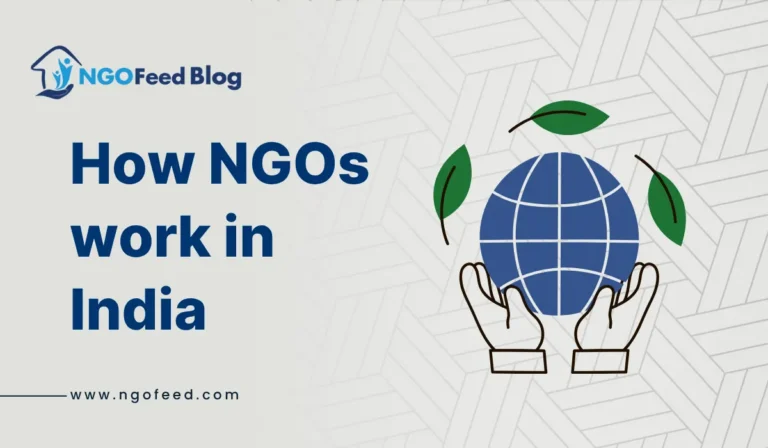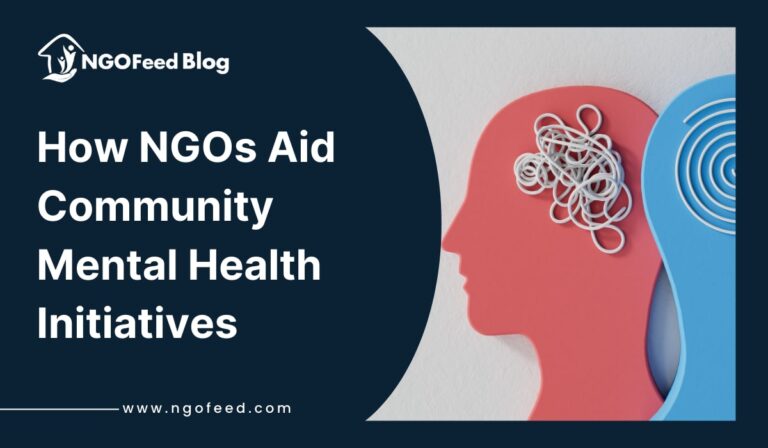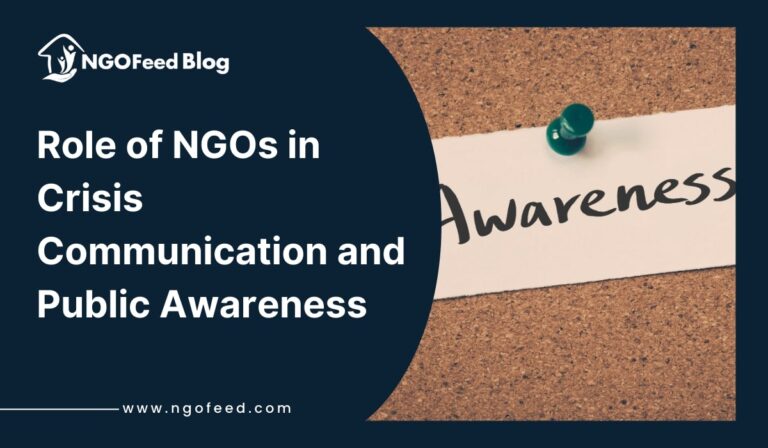Role of NGOs in India: Non-Governmental Organizations (NGOs) are a fundamental part of the social, economic and developmental space in India. In a country like India that is as diverse and populous as it is, the government cannot possibly address every challenge facing communities around issues such as poverty, education, health and environmental sustainability. This is where NGOs contribute significantly.
NGOs function separately from the government and act as a catalyst for social change while interfacing with communities and policymakers. Over the years, NGOs have emerged as one of the bedrock pillars of supporting India’s development agenda.
Table of Contents
What Are NGOs?
Non-Governmental Organizations (NGOs) are nonprofit organizations that work for social welfare, human rights, and development without the aim of profit maximization or governmental authority. They work locally, nationally, or internationally, either independently or in partnership with NGOs role in civil society, governmental jurisdictions, or private organizations.
Functions of NGOs
- Service Delivery: Providing critical services such as education, health, disaster relief and sanitation.
- Advocacy and Awareness: Advocating for policy change and raising social consciousness around issues such gender equality, environment and human rights.
- Empowerment: Helping marginalized communities to be self-sufficient and advocate their own rights.
- Capacity Building: Strengthening local institutions and governance systems for sustainable development.
- In India, NGOs are registered under one of the domestic legal frameworks, such as: the Societies Registration Act, 1860, the Indian Trusts Act, 1882 and Section 8 of the Companies Act, 2013.
Importance of NGOs in India
NGOs in India play a crucial role in supplementing government efforts and filling policy gaps. Their importance can be understood through the following lenses:
- Bridging Governance Gaps: In remote and underserved regions, where government reach is limited, NGOs act as implementation partners for welfare programs, ensuring benefits actually reach the grassroots level.
- Promoting Inclusive Development: By focusing on marginalized communities, including women, children, tribals and differently-abled individuals, NGOs ensure equitable growth and social justice.
- Innovation and Flexibility: NGOs often introduce innovative models for education, skill development and healthcare that can later be scaled up by the government.
- Strengthening Democracy: They act as watchdogs, holding authorities accountable and ensuring transparency in governance.
- Fostering Global Partnerships: Through collaboration with international organizations, NGOs bring global best practices and funding to Indian development projects.
The Role of NGOs in India’s Development
NGOs in India operate across multiple sectors, each contributing to national progress in unique ways.
1. Education
Education-focused NGOs like Pratham, Teach For India and Akshaya Patra Foundation have made quality education accessible to millions of underprivileged children. They not only focus on academic learning but also on digital literacy, teacher training and child nutrition.
2. Healthcare
Organizations like Smile Foundation, HelpAge India and CARE India provide essential medical services, maternal health programs and nutrition drives, especially in rural and slum areas. During the COVID-19 pandemic, many NGOs provided oxygen support, vaccination awareness and telemedicine facilities.
3. Women Empowerment
NGOs such as SEWA (Self Employed Women’s Association) and Snehalaya promote women’s rights, self-employment and protection against domestic violence.
4. Environment and Sustainability
Groups like Centre for Science and Environment (CSE) and WWF-India advocate for sustainable development, forest conservation and renewable energy awareness.
5. Disaster Relief and Humanitarian Aid
In times of natural disasters, floods, cyclones, or earthquakes NGOs like Goonj and Save the Children India provide immediate relief and long-term rehabilitation.
6. Rural Development
NGOs are instrumental in uplifting rural India through microfinance, agricultural support, water conservation and livelihood training.
Challenges Faced by NGOs in India
Despite their vital contribution, NGOs face several obstacles that hinder their functioning and impact.
- Funding Constraints: A majority of NGOs depend heavily on donations and grants, which are inconsistent and often limited by bureaucratic red tape. The Foreign Contribution Regulation Act (FCRA) has further tightened access to foreign funding.
- Regulatory and Compliance Hurdles: Complex registration and renewal processes, coupled with stringent reporting norms and create administrative burdens for small NGOs.
- Lack of Skilled Workforce: Many NGOs lack trained staff in areas like financial management, technology, and research, affecting organizational efficiency.
- Accountability and Transparency Issues: A few instances of fund misuse have tarnished the image of genuine NGOs, leading to public mistrust.
- Sustainability Challenges: Maintaining long-term impact without consistent resources and institutional backing remains a major concern.
How NGOs Work in India
The success of NGOs depends on their structure, funding sources, and collaboration models.
Organizational Structure
- Board of Trustees/Directors: Responsible for governance and strategy.
- Executive Team: Handles program design, execution, and management.
- Volunteers and Field Workers: Execute on-ground activities.
Funding Sources
- Donations from individuals and corporates.
- Grants from national and international foundations.
- CSR (Corporate Social Responsibility) partnerships.
- Government contracts and project-based collaborations.
Collaboration Models
NGOs often collaborate with:
- Government bodies (for public welfare projects).
- Corporates (under CSR initiatives).
- Media (for awareness and outreach).
- Communities (for participatory development).
Major NGOs in India and Their Work
Some of the most impactful NGOs shaping India’s development include:
| NGO Name | Focus Area | Key Contribution |
| Pratham | Education | Bridging learning gaps through low-cost models. |
| Akshaya Patra Foundation | Midday Meals | Providing nutritious meals to over 2 million children daily. |
| Goonj | Disaster Relief & Rural Development | Using urban surplus for rural empowerment. |
| Smile Foundation | Health & Education | Holistic development programs for children and women. |
| HelpAge India | Elderly Care | Advocating for senior citizens’ welfare and rights. |
Their Work and Challenges – Case Study
Case Study: Akshaya Patra Foundation: The Akshaya Patra Foundation, established in 2000, runs the world’s largest NGO-led school meal program. Its mission is to eliminate classroom hunger and promote education among underprivileged children.
Impact:
- Serves over 2 million meals daily across 14 Indian states.
- Partnered with the Government of India under the Mid-Day Meal Scheme.
- Uses advanced technology and centralized kitchens to ensure efficiency.
Challenges: Rising operational costs, logistics in remote regions, and fluctuating donations remain ongoing hurdles. Despite this, its transparent model has made it a global example of effective NGO governance.
Additional Insights: Trends and Expert Opinions
- Digital Transformation: Due to rising internet usage in India, NGOs are using different digital mechanisms for fundraising, project management and awareness campaigns. Platforms such as NGOFeed empower organizations to increase their online presence, visibility and donors.
- Emphasis on Data-driven Impact: New-age NGOs are utilizing analytics and impact measurement tools to demonstrate transparency and secure multi-year funding.
- Collaboration vs. Competition: The future of NGOs is collective efforts at alliances, NGOs working together with corporates and government to make progress towards Sustainable Development Goals (SDGs).
- Expert Perspective: According to the NITI Aayog’s NGO Darpan portal, there are more than 1.6 million NGOs across India, which means that if joined and coordinated together there is significant potential for social impact.
Conclusion
Non-governmental organizations constitute the backbone of India’s social development ecosystem. They extend government reach, empower individuals and families and build innovative solutions to chronic challenges. Financial constraints and structural barriers are a hallmark of the Nigerian development context, but despite that their efforts to improve lives continues to generate impact in all places and at all times.
In order for India to achieve inclusive growth in line with its Sustainable Development Goals, the development community must provide NGOs with stronger institutional support, transparent funding mechanisms and digital access. Platforms such as NGOFeed facilitate and enhance this journey of connecting NGOs, generating higher impact and a better tomorrow.
Frequently Asked Questions (FAQs)
1. What is the main purpose of NGOs in India?
The main purpose is to promote social welfare, empower marginalized communities and bridge gaps in government services through education, health and development programs.
2. How are NGOs funded in India?
NGOs receive funding from donations, CSR initiatives, government grants and foreign contributions under the FCRA framework.
3. What are the legal ways to register an NGO in India?
An NGO can be registered as a Society, Trust or Section 8 Company under Indian law.
4. What is the future of NGOs in India?
The future lies in digital adoption, data-driven impact measurement and multi-sector collaborations for achieving sustainable development goals.










